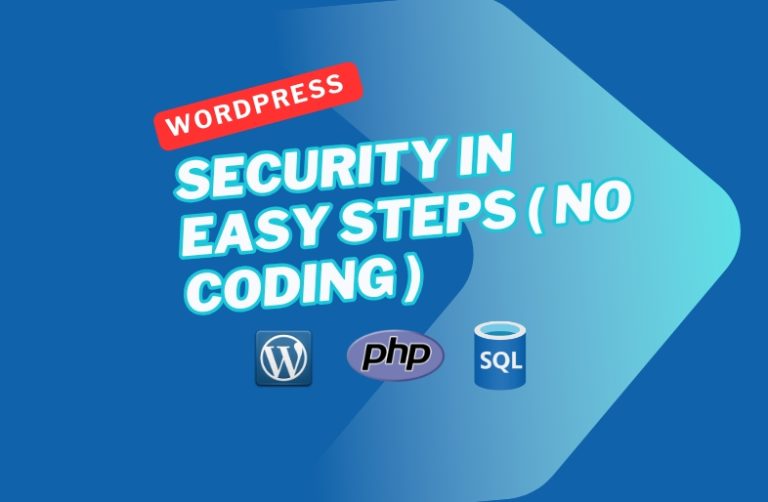WordPress security is an important issue, especially when your website contains sensitive data or you run a blog or business site. Below are some simple steps you can take to increase the security of your WordPress site without any coding:
1. Use strong passwords:
- Strong password for admin account: Use a complex and strong password for your admin account. Use uppercase letters, lowercase letters, numbers, and special symbols in the password.
- Password policy for users: If you have multiple users on your site, encourage them to use strong passwords as well.
2. Enable Two-Factor Authentication (2FA):
- Using a plugin: You can enable two-factor authentication using a plugin like Wordfence or Google Authenticator. This will add an extra layer of security to your account.
3. Keep Everything Updated:
- WordPress Core Updates: Always use the latest WordPress version. WordPress regularly releases updates that fix security issues.
- Plugin and theme updates: Regularly update all plugins and themes used on your site. Outdated versions can be a security risk.
4. Use secure hosting:
- Reputable hosting provider: Choose a trusted and secure hosting provider. Good hosting providers offer security features like firewalls, malware scanning, etc. on their servers.
- SSL Certificate: Make sure your hosting provider offers an SSL certificate. This encrypts and secures your site’s data.
5. Use security plugins:
- Wordfence Security: This plugin provides firewall, malware scanning, and login security features.
- iThemes Security: This plugin provides various security features such as brute force protection, file change detection, and database backups.
- Sucuri Security: This plugin provides security audits, malware scanning, and blacklist monitoring.
6. Remove unnecessary plugins and themes:
- Delete Unnecessary Plugins: Delete any plugins that are not being used on your site. Active but unused plugins can pose a security risk.
- Delete unnecessary themes: Keep only the themes you use. Delete the rest.
7. Take regular backups:
- Use a backup plugin: Back up your site regularly using a plugin like UpdraftPlus or BackupBuddy. This will help you easily restore your site if it gets hacked or if any data is lost.
- Backup location selection: Save backup files to cloud storage or another secure location.
8. Secure the login page:
- Change the login URL: Change the default login URL (/wp-admin or /wp-login.php) using WPS Hide Login or a similar plugin. You can set a custom login page URL like: site.mylogin.php. This helps protect against brute force attacks.
- Limit login attempts: Limit login attempts using Limit Login Attempts or a similar plugin. This helps prevent brute force attacks.
9. Check file permissions:
- Correct file permissions: Make sure your file and folder permissions are set correctly. Typically, file permissions should be 644 and folder permissions should be 755.
- Using FTP or File Manager: You can check and change file permissions using an FTP client or the file manager in your hosting control panel.
10. Prevent spam and malicious comments:
- Comment moderation: Enable comment moderation on your site. This helps prevent spam and malicious comments.
- Akismet Anti-Spam Plugin: Install and activate the Akismet plugin. It automatically filters spam comments.
By following these steps, you can increase the security of your WordPress site without any coding. Remember, security is an ongoing process, so regularly check the security of your site and take necessary steps.



